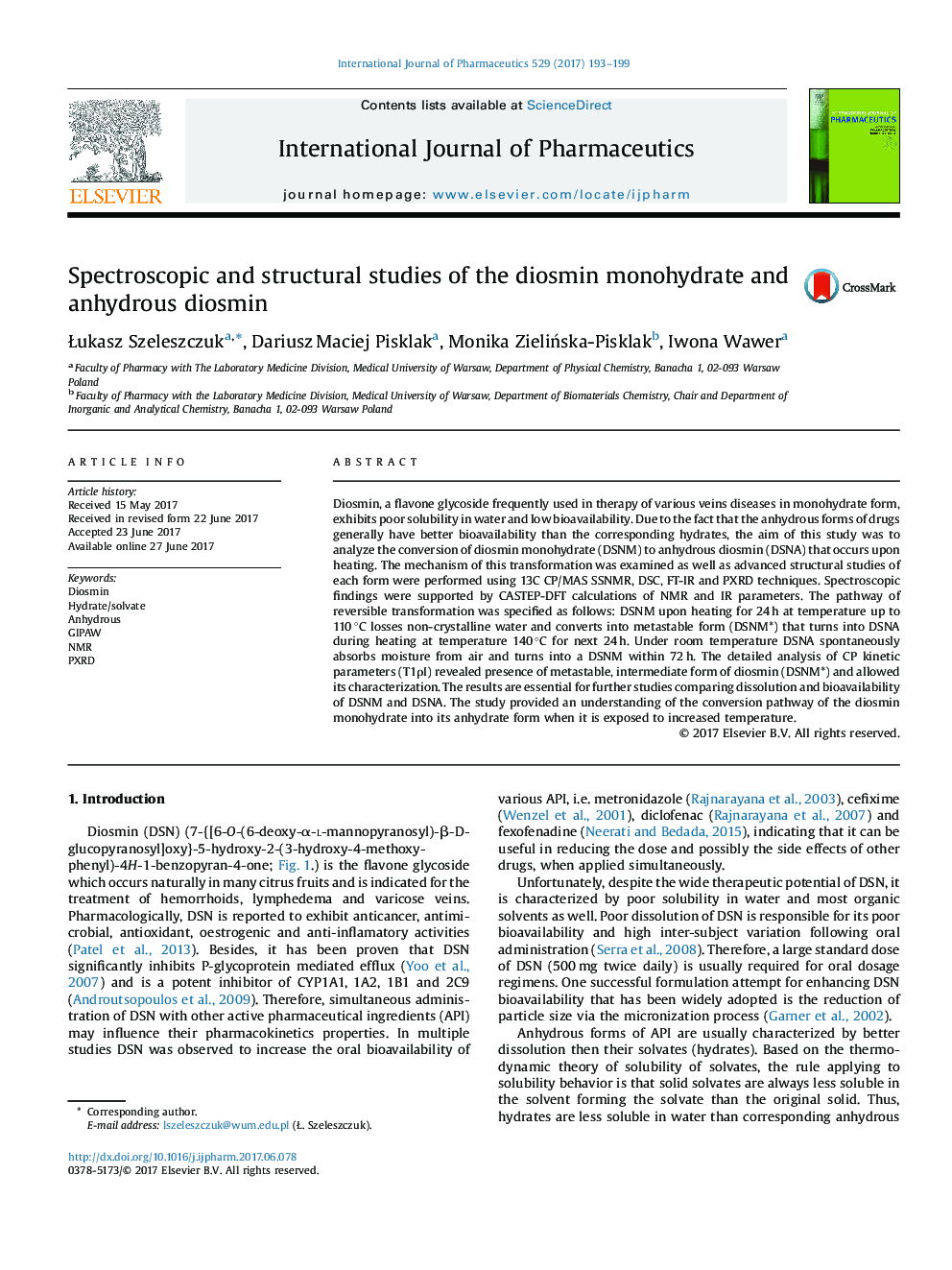| Article ID | Journal | Published Year | Pages | File Type |
|---|---|---|---|---|
| 5550176 | International Journal of Pharmaceutics | 2017 | 7 Pages |
Diosmin, a flavone glycoside frequently used in therapy of various veins diseases in monohydrate form, exhibits poor solubility in water and low bioavailability. Due to the fact that the anhydrous forms of drugs generally have better bioavailability than the corresponding hydrates, the aim of this study was to analyze the conversion of diosmin monohydrate (DSNM) to anhydrous diosmin (DSNA) that occurs upon heating. The mechanism of this transformation was examined as well as advanced structural studies of each form were performed using 13C CP/MAS SSNMR, DSC, FT-IR and PXRD techniques. Spectroscopic findings were supported by CASTEP-DFT calculations of NMR and IR parameters. The pathway of reversible transformation was specified as follows: DSNM upon heating for 24 h at temperature up to 110 °C losses non-crystalline water and converts into metastable form (DSNM*) that turns into DSNA during heating at temperature 140 °C for next 24 h. Under room temperature DSNA spontaneously absorbs moisture from air and turns into a DSNM within 72 h. The detailed analysis of CP kinetic parameters (T1ÏI) revealed presence of metastable, intermediate form of diosmin (DSNM*) and allowed its characterization. The results are essential for further studies comparing dissolution and bioavailability of DSNM and DSNA. The study provided an understanding of the conversion pathway of the diosmin monohydrate into its anhydrate form when it is exposed to increased temperature.
Graphical abstractDownload high-res image (131KB)Download full-size image
